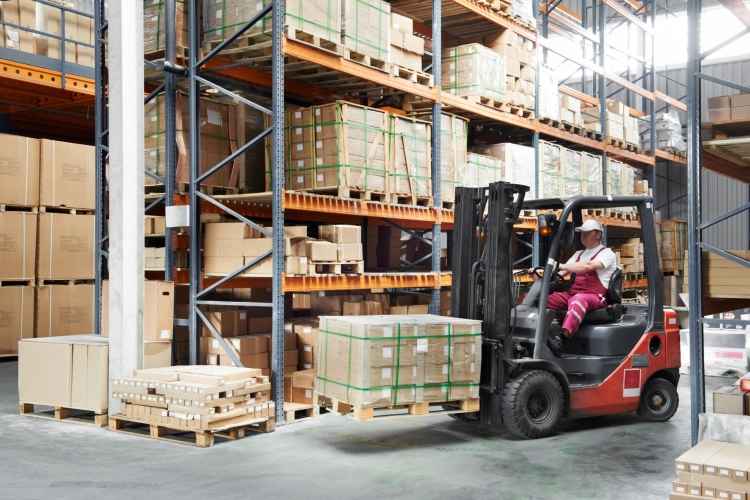Logistics Sector in Poland Shows Cautious Optimism
- Oprac. M.K.
- Kategoria: English zone
As many as 78% of logistics companies in Poland rate the condition of the logistics sector as good or very good. However, according to the newly published ManpowerGroup report "Where Are You Heading, Logistics?", there is a clear shift in sentiment: fewer companies express optimism, and more are approaching the future with increased caution. The biggest challenge in running a logistics business remains high operational costs, particularly fuel and energy. This is the second edition of the report, with Łukasiewicz – Poznański Instytut Technologiczny acting as the report's knowledge partner.
The Polish logistics sector is currently viewed positively – nearly 8 out of 10 companies rate its condition as good or very good. However, compared to the first edition of the report in 2021, optimism has clearly declined. In 2025, the share of respondents rating the sector as “very good” dropped from 22% in 2021 to 14%, while the share of companies with a negative outlook increased from 1% to 7%. About one in seven respondents (15%) rated the sector as neutral. Currently, most companies (50%) expect revenue growth of no more than 10%. For comparison, in 2021 this was true for only 31% of companies. Meanwhile, the number of firms forecasting more dynamic growth (11% to 30%) fell significantly, from 43% in 2021 to 28% in 2025. Only 1% of respondents now anticipate growth exceeding 50%, compared to 4% in 2021. Nearly one in five organizations (18%) expect no growth at all.
The Industry Faces Rising Costs and Staffing Challenges
Today, logistics companies are primarily struggling with rising operational costs, including fuel and energy (44%), a shortage of skilled workers (37%), and inappropriate inventory levels (26%). Other challenges include inadequate customer service and rising expectations in this area (20%), as well as lack of sufficient support from IT systems. The least-cited challenges include managing omnichannel logistics (5%) and aligning logistics operations with environmental requirements (8%).
By comparison, in 2021 the top difficulties were lack of IT support (38%), a shortage of skilled workers (34%), and high logistics costs (31%).
Challenges such as high logistics costs and a shortage of skilled labor remain key barriers to growth. However, customer service and environmental concerns are playing an increasingly important role. Companies are turning to innovation, warehouse automation, artificial intelligence, and digitalization of processes as key strategies for improving efficiency and competitiveness. But the success of these implementations depends on proper change management, including investment in employee skill development. It is this combination of technology and human capital that will determine Poland’s position in the global logistics market in the coming years. Companies investing in internal development and future competencies today will build a lasting advantage. In logistics, those who develop their resources fastest will win - emphasizes Tomasz Walenczak, General Director of ManpowerGroup Poland.
Technology as a Competitive Edge
According to the report, warehouse process automation and robotics (54%) are expected to have the greatest impact on the sector in the coming years. This is followed by artificial intelligence, whose potential is recognized by 49% of firms, and the digitalization of processes, cited by 41%. Less popular, though still relevant, are technologies involving autonomous vehicles (20%) and Big Data analytics (20%).
In the near future, companies plan to invest primarily in AI (35%), warehouse automation and robotics (31%), and digitalization (22%). Big Data (9%) and the sharing economy (16%) received the fewest mentions.
Decisions about investing in new technologies must be well justified and aligned with a company’s needs. Organizations want to invest in AI and automation, but the relatively low share of responses indicating plans to invest in Big Data is concerning. How can AI be implemented effectively without high-quality data? Complete and reliable data – covering aspects such as flows, inventory, and cost structures – is essential. It should be the foundation for deciding whether to invest in AI-based technologies and systems. At the same time, during implementation, that data determines the effectiveness of the solutions. On the bright side, technological maturity in the logistics sector is increasing year by year. However, true maturity is not just about buying technology, but about implementing and using it effectively - says Marta Cudziło, Deputy Director of the Center for Modern Mobility and Head of the Logistics Research Group at Łukasiewicz–Poznański Instytut Technologiczny.
Investment Plans for 2025
Looking at investment plans for 2025, most organizations identified hiring new employees (40%), implementing modern technologies (33%), and building new warehouses (25%) as their priorities. Nearly one in five companies (19%) do not plan any new investments in 2025. The fewest indicated plans to invest in fleet electrification (10%) and reducing process emissions (14%).
The report "Where Are You Heading, Logistics?" is based on a CAWI survey of 188 representatives from logistics-related organizations – including freight companies, carriers, operators, and businesses with internal logistics departments. Respondents answered 27 questions concerning the sector’s condition and HR challenges.
Source: ManpowerGroup Poland


